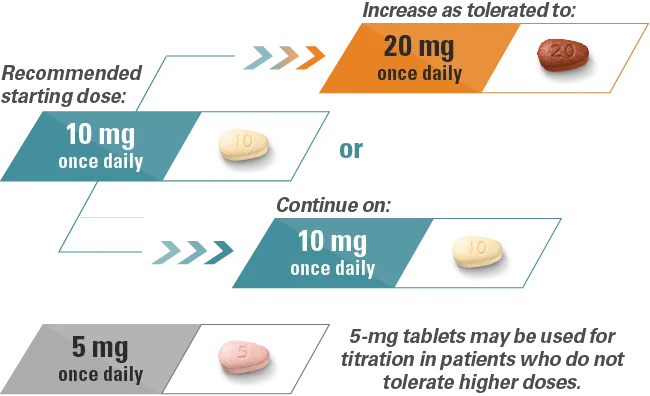- Trintellix (vortioxetine) prescribing information. Takeda Pharmaceuticals.
- Alvarez E, Perez V, Dragheim M, Loft H, Artigas F. Int J Neuropsychopharmacol. 2012;15(5):589‑600.
- Henigsberg N, Mahableshwarkar AR, Jacobsen P, Chen Y, Thase ME. J Clin Psychiatry. 2012;73(7):953‑959.
- Boulenger J-P, Loft H, Olsen CK. Int Clin Psychopharmacol. 2014;29(3):138‑149.
- Mahableshwarkar AR, Jacobsen P, Chen Y, Serenko M, Trivedi MH. Psychopharmacology (Berl). 2015;232(12):2061‑2070.
- Jacobsen P, Mahableshwarkar AR, Serenko M, Chan S, Trivedi MH. J Clin Psychiatry. 2015;76(5):575‑582.
- Katona C, Hansen T, Olsen CK. Int Clin Psychopharmacol. 2012;27(4):215‑223.
- Costa SL, Genova HM, DeLuca J, Chiaravalloti ND. Mult Scler. 2017;23(6):772‑789.
- McIntyre RS, Lophaven S, Olsen CK. Int J Neuropsychopharmacol. 2014;17(10):1557‑1567.
- Mahableshwarkar AR, Zajecka J, Jacobson W, Chen Y, Keefe RSE. Neuropsychopharmacology. 2015;40(8):2025‑2037.
- Data on file. Takeda Pharmaceuticals.
- Data on file. Lundbeck.
- FDA updates Trintellix® (vortioxetine) label to include data showing improvement in processing speed, an important aspect of cognitive function in acute Major Depressive Disorder (MDD). News release. GlobeNewswire. May 2, 2018.
- Boulenger J-P, Loft H, Florea I. J Psychopharmacol. 2012;26(11):1408‑1416.
- Jacobsen PL, Mahableshwarkar AR, Chen Y, Chrones L, Clayton AH. J Sex Med. 2015;12(10):2036‑2048.
- Kambeitz JP, Howes OD. J Affect Disord. 2015;186:358-366.
- American Psychiatric Association. Depressive disorders. In: Diagnostic and Statistical Manual of Mental Disorders. 5th edition (DSM-5®). Arlington, VA: American Psychiatric Association; 2013:155‑188.
- Conradi HJ, Ormel J, de Jonge P. Psychol Med. 2011;41(6):1165-1174.
TRINTELLIX® (vortioxetine) is indicated for the treatment of Major Depressive Disorder (MDD) in adults.

Patient portrayal.
Individual results may vary.
Dosing &
Administration
How does dosing fit into the story?
TRINTELLIX has once-daily oral dosing with or without food1
TRINTELLIX is available in 3 strengths
TRINTELLIX recommended dose is 20 mg/day, as tolerated

Tablets shown not actual size.
- The efficacy and safety of doses above 20 mg/day have not been evaluated1
- Prior to initiating treatment with TRINTELLIX, screen patients for personal or family history of bipolar disorder, mania, or hypomania1
- The maximum dose is 10 mg/day in patients who are known CYP2D6 poor metabolizers1
- Although patients can abruptly discontinue therapy with TRINTELLIX, it is recommended that doses of 15 mg/day or 20 mg/day be reduced to 10 mg/day for 1 week prior to discontinuation1
- In placebo-controlled trials, some patients experienced transient adverse reactions, such as headache and muscle tension, following abrupt discontinuation
- In placebo-controlled trials, some patients experienced transient adverse reactions, such as headache and muscle tension, following abrupt discontinuation
- Concomitant administration of TRINTELLIX and strong CYP2D6 inhibitors or strong CYP inducers may require a dose adjustment of TRINTELLIX1
For additional dosing information, please see the Full Prescribing Information.
Drug interactions
Clinically important drug interactions with TRINTELLIX1
| Drug Class | Clinical Impact & Recommendations |
Monoamine Oxidase Inhibitors selegiline, tranylcypromine, isocarboxazid, phenelzine, linezolid, methylene blue | CONCOMITANT USE WITH TRINTELLIX INCREASES THE RISK OF SEROTONIN SYNDROME MAOIs for psychiatric disorders are contraindicated with TRINTELLIX or within 21 days of stopping TRINTELLIX. TRINTELLIX is contraindicated within 14 days of stopping MAOIs for psychiatric disorders. Starting TRINTELLIX in patients on linezolid or IV methylene blue is also contraindicated. |
Other Serotonergic Drugs Other SNRIs, SSRIs, triptans, tricyclic antidepressants, opioids, lithium, buspirone, amphetamines, tryptophan, and St. John's Wort | CONCOMITANT USE WITH TRINTELLIX INCREASES THE RISK OF SEROTONIN SYNDROME Monitor for serotonin syndrome when TRINTELLIX is coadministered with other serotonergic drugs. If serotonin syndrome occurs, discontinue TRINTELLIX and other serotonergic drugs, and initiate supportive treatment. |
Strong CYP2D6 Inhibitors bupropion, fluoxetine, paroxetine, quinidine | CONCOMITANT USE WITH TRINTELLIX INCREASES TRINTELLIX PLASMA LEVELS Reduce the TRINTELLIX dose by half. When discontinuing a strong CYP2D6 inhibitor, increase TRINTELLIX to its original dose. |
Strong CYP Inducers rifampin, carbamazepine, phenytoin | CONCOMITANT USE WITH TRINTELLIX DECREASES TRINTELLIX PLASMA LEVELS Consider increasing the dose of TRINTELLIX when coadministered for more than 14 days. The maximum TRINTELLIX dose should not be greater than three times the original TRINTELLIX dose. When discontinuing a strong CYP inducer, reduce TRINTELLIX within 14 days to its original dose. |
Antiplatelet Drugs and Anticoagulants aspirin, clopidogrel, heparin, warfarin | CONCOMITANT USE WITH TRINTELLIX MAY POTENTIATE BLEEDING RISK Inform patients of increased bleeding risk. For patients on warfarin, monitor INR carefully when initiating, titrating or discontinuing TRINTELLIX. |
Drugs Highly Bound to Plasma Protein warfarin | CONCOMITANT USE WITH TRINTELLIX MAY INCREASE FREE TRINTELLIX PLASMA LEVELS OR OTHER HIGHLY PROTEIN-BOUND DRUG LEVELS Monitor for adverse reactions. Reduce dosage of TRINTELLIX or other highly protein-bound drugs as needed. |
Note: Class examples do not include all possible class members.
Abbreviations: INR, International Normalized Ratio; IV, Intravenous; MAOIs, Monoamine oxidase inhibitors; NSAIDs, Nonsteroidal anti-inflammatory drugs; SNRIs, Serotonin-norepinephrine reuptake inhibitors; SSRIs, Selective serotonin reuptake inhibitors.
For additional Drug Interactions information, please see the Full Prescribing Information.
Tools for your patients and practice

Long-term
clinical data
Results from multiple clinical studies of TRINTELLIX.

Prescription
savings for your
eligible patients
Find out about savings and support by accessing the Savings Card brochure.

Safety profile
See how the safety profile fits in the story.

Request a
rep visit
Connect with a TRINTELLIX representative.

Resources for
you and your
patients
Find a range of information, education, and patient resources, as well as industry insights.